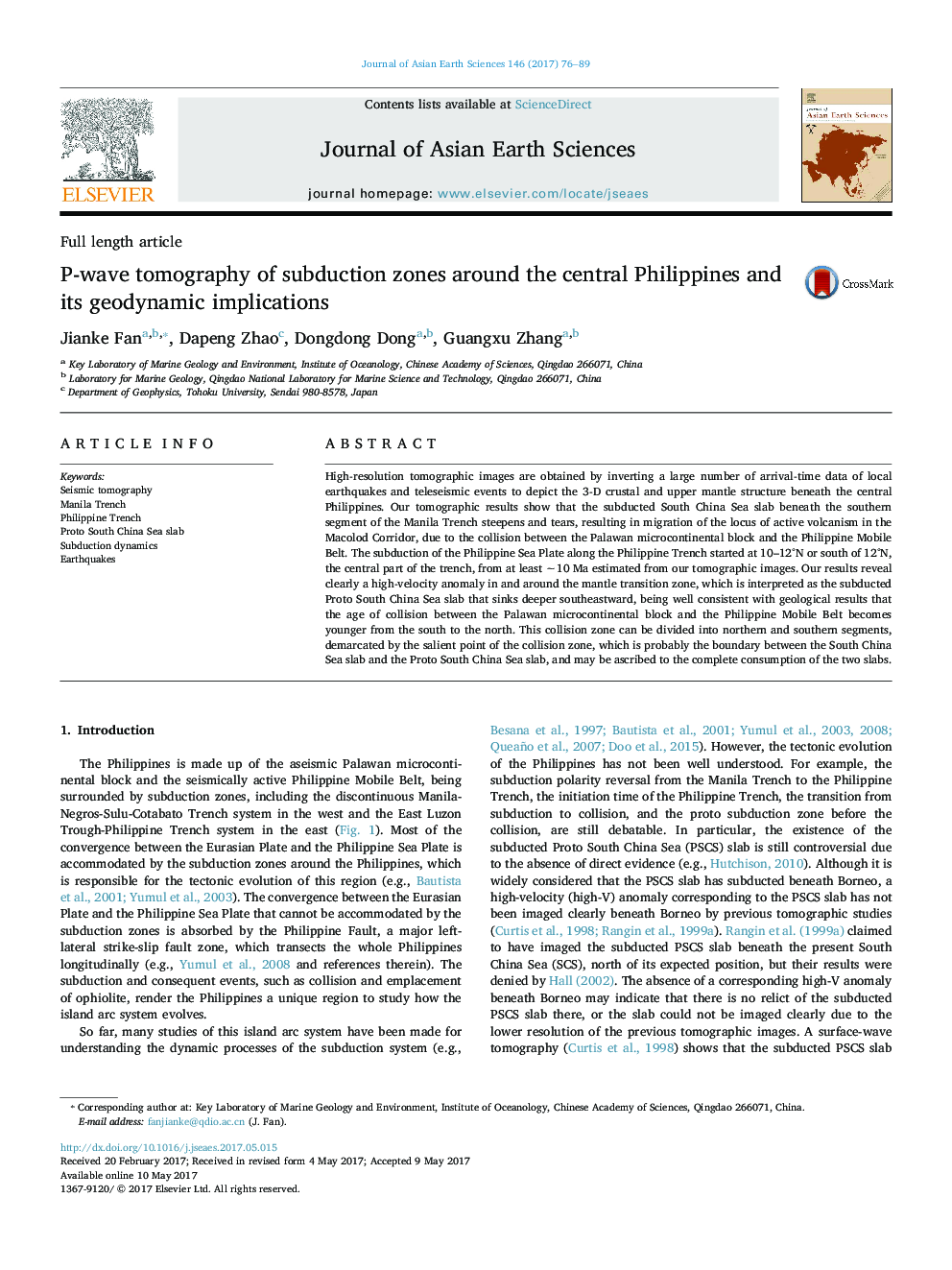| کد مقاله | کد نشریه | سال انتشار | مقاله انگلیسی | نسخه تمام متن |
|---|---|---|---|---|
| 5785919 | 1640327 | 2017 | 14 صفحه PDF | دانلود رایگان |
- The southernmost segment of the subducted South China Sea slab steepens and tears.
- The Philippine Sea Plate subduction was initiated at 10-12°N from â¼10 Ma.
- The Proto South China Sea slab sinks deeper toward SE beneath the central Philippines.
High-resolution tomographic images are obtained by inverting a large number of arrival-time data of local earthquakes and teleseismic events to depict the 3-D crustal and upper mantle structure beneath the central Philippines. Our tomographic results show that the subducted South China Sea slab beneath the southern segment of the Manila Trench steepens and tears, resulting in migration of the locus of active volcanism in the Macolod Corridor, due to the collision between the Palawan microcontinental block and the Philippine Mobile Belt. The subduction of the Philippine Sea Plate along the Philippine Trench started at 10-12°N or south of 12°N, the central part of the trench, from at least â¼10 Ma estimated from our tomographic images. Our results reveal clearly a high-velocity anomaly in and around the mantle transition zone, which is interpreted as the subducted Proto South China Sea slab that sinks deeper southeastward, being well consistent with geological results that the age of collision between the Palawan microcontinental block and the Philippine Mobile Belt becomes younger from the south to the north. This collision zone can be divided into northern and southern segments, demarcated by the salient point of the collision zone, which is probably the boundary between the South China Sea slab and the Proto South China Sea slab, and may be ascribed to the complete consumption of the two slabs.
348
Journal: Journal of Asian Earth Sciences - Volume 146, 15 September 2017, Pages 76-89
